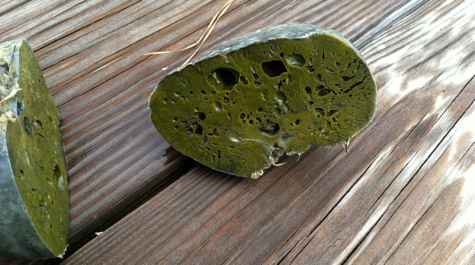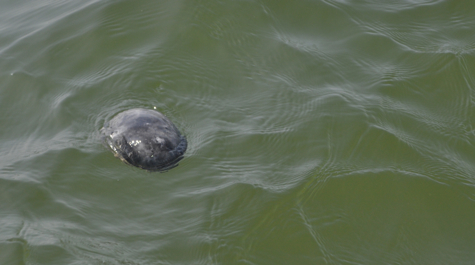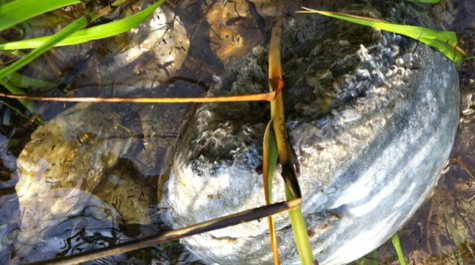Patterson solves mystery of "gray blobs"
VIMS professor Mark Patterson was interviewed this week by WAVY TV reporter Stephanie Harris concerning the mysterious gray blobs that have been washing up on local beaches following Hurricane Irene.
Weekend reports by local media suggested that blobs washing up on Ocean View Beach might have been human waste released from a passing vessel. Patterson examined blobs collected by a local woman from the beach and confirmed an earlier VIMS report that the objects are not human waste but rather decaying potato sponges that were most likely dislodged from the bayfloor by the high waves associated with Hurricane Irene.
VIMS has received numerous reports of these blobs since Irene passed over the Chesapeake Bay region on the weekend of August 27-28.
Mystery surrounding beach clumps solved: wavy.com






